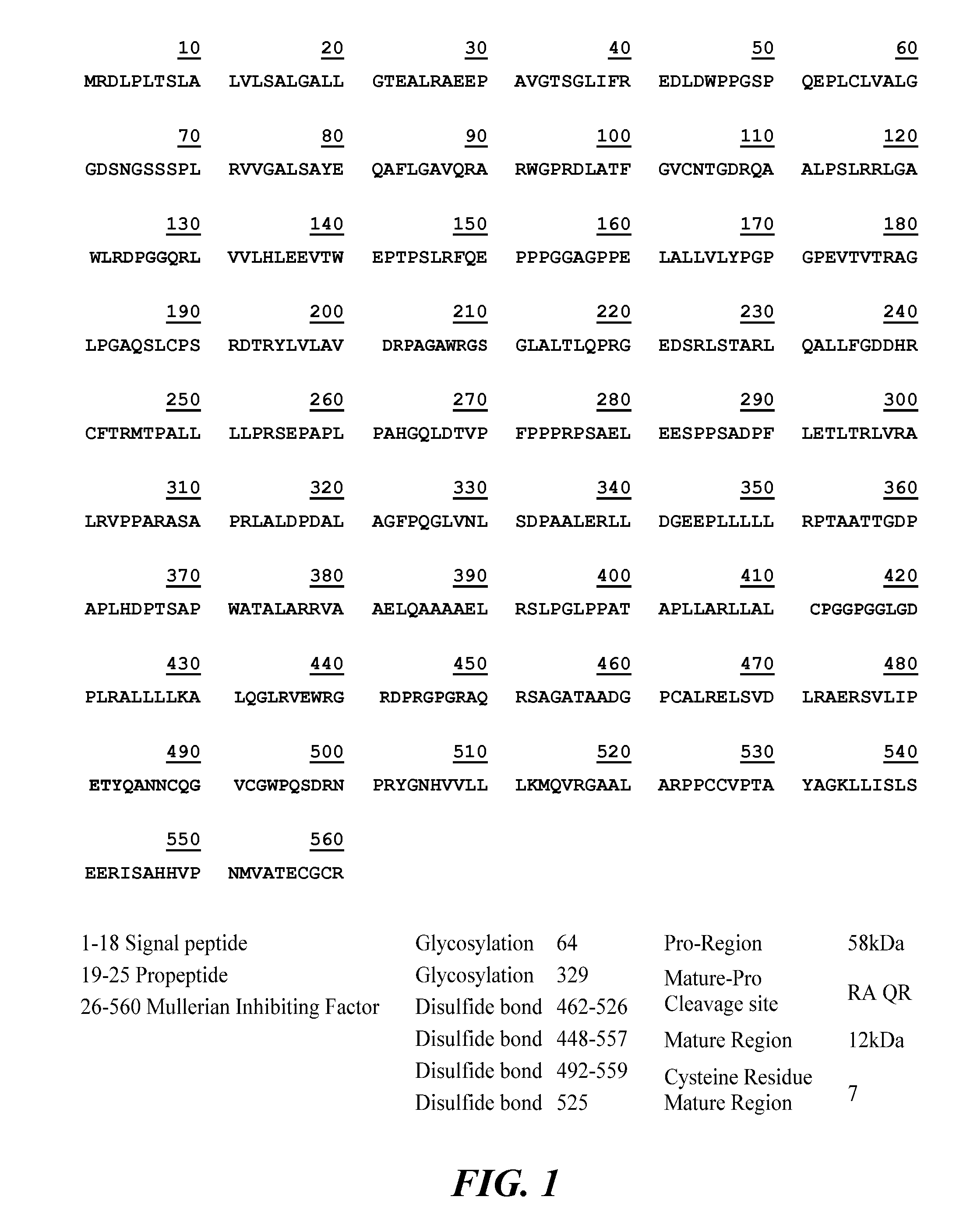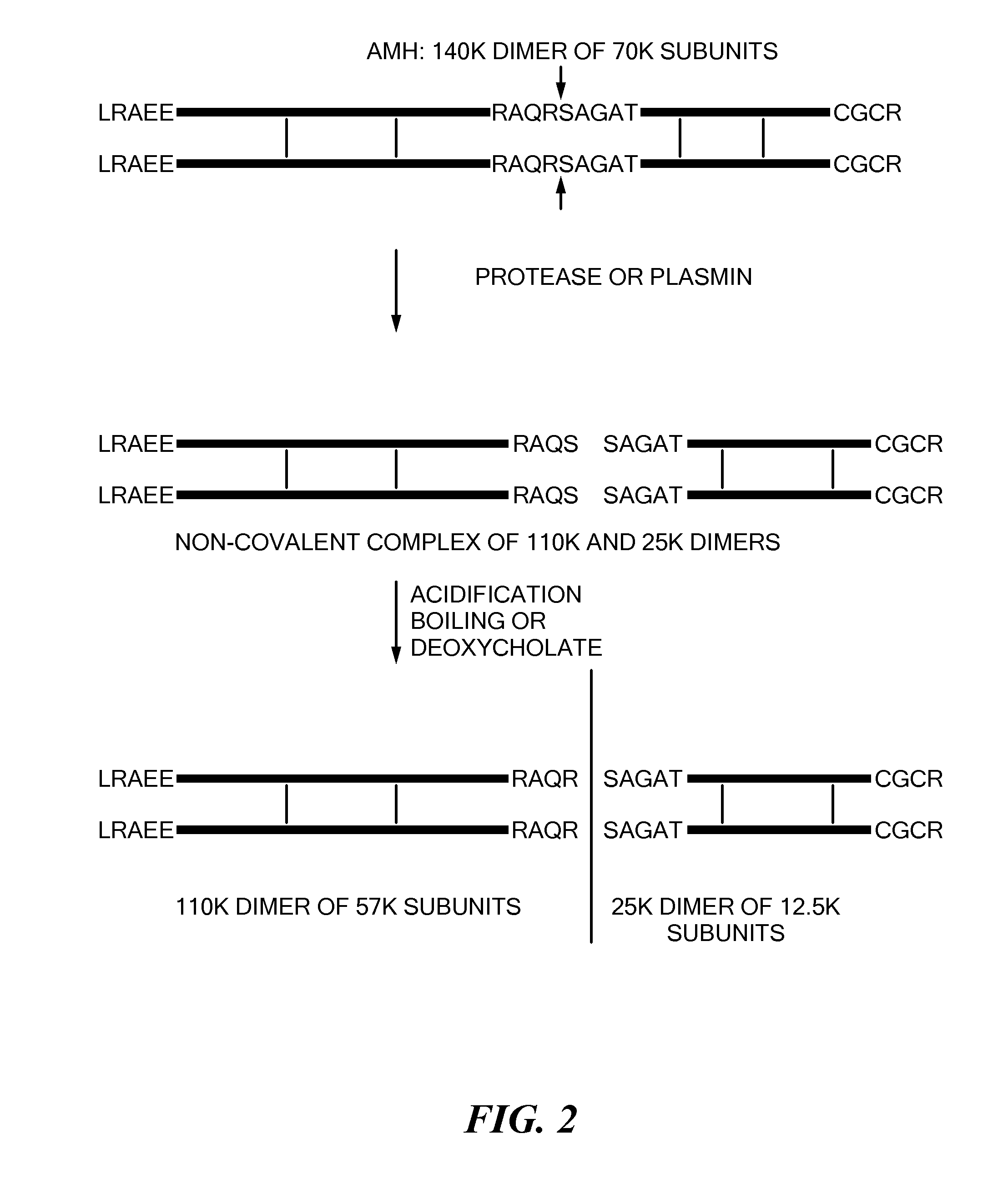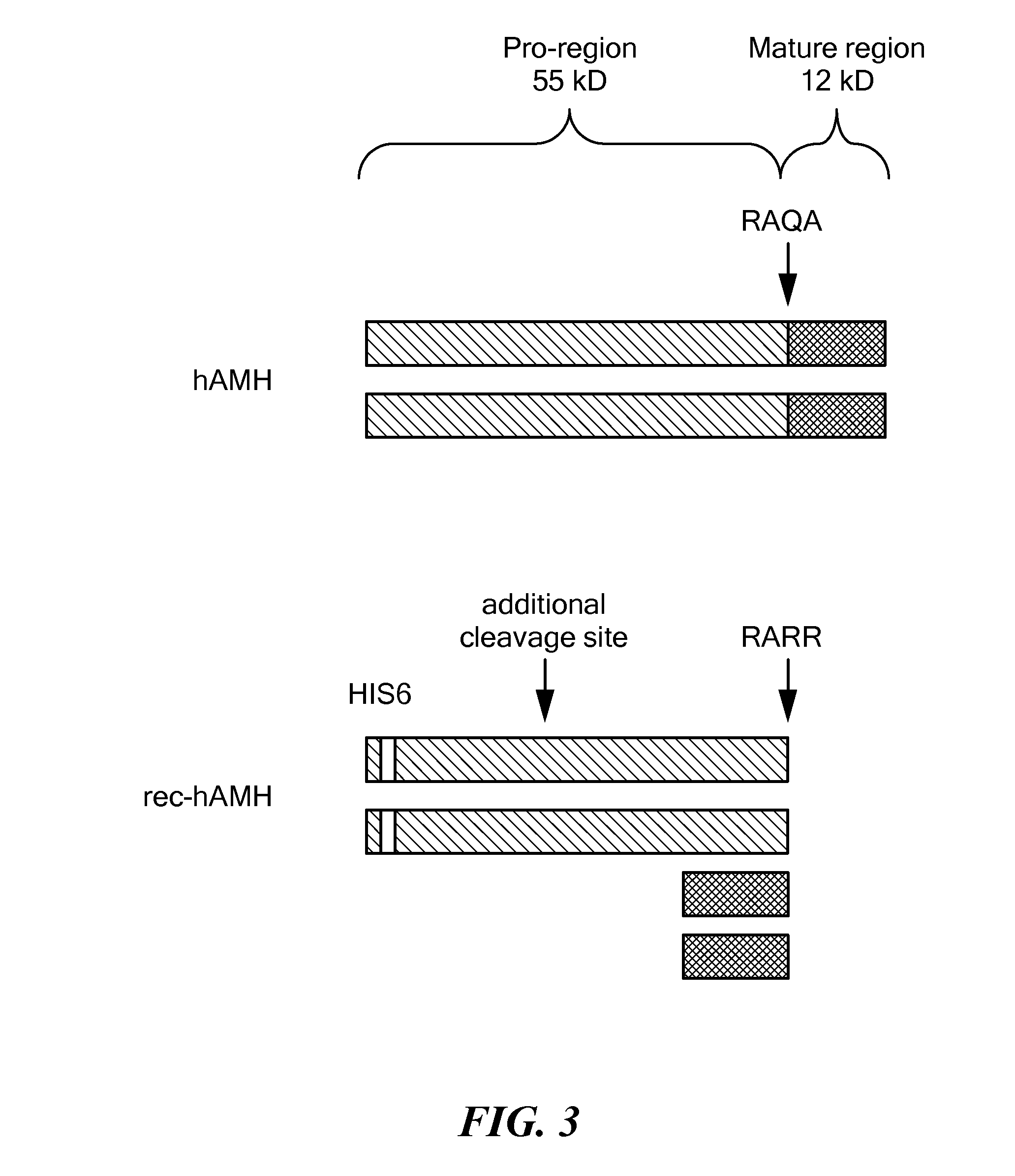Antibody Compositions and Immunoassay Methods to Detect Isoforms of Anti-Müllerian Hormone
an anti-mullerian hormone and immunoassay technology, which is applied in the field of anti-mullerian hormone antibody compositions and immunoassay methods to detect isoforms of the hormone, can solve the problems of inability to accurately measure amh in a given sample, limited assay, and inability to distinguish between monomeric and dimeric forms of the protein
- Summary
- Abstract
- Description
- Claims
- Application Information
AI Technical Summary
Benefits of technology
Problems solved by technology
Method used
Image
Examples
example 1
Antibody Production
[0242]Male AMH knockout mice on a C57bl / 6 background were immunized with recombinant human AMH. An initial injection of 40 μg of recombinant human AMH was given to each mouse subcutaneously in Freund's Complete Adjuvant (MP Biomedical 0855828) and one booster injection of 40 μg in Freund's Incomplete Adjuvant (MP Biomedical 0855829) was given after one month. Tail bleeds were collected from the mice and titrations of the samples were screened on AMH coated plates with 10 μg / well. The highest-responding mouse was determined by color intensity (O.D. from 0-3, light yellow-dark yellow), and it was selected for final boosting. Final boosting was given one month after the booster injection date. For four consecutive days, the mouse received approximately 162 μg of recombinant human AMH, administered by intraperitoneal injection. On the fifth day, the mouse was sacrificed and the spleen was removed aseptically. Spleen cells were centrifuged, aliquoted and stored in liqu...
example 2
Antibody Screening
[0243]A fusion with SP2 / 0 cells was performed with one aliquot of the spleen cells. Fusions were initially screened on the immunogen, recombinant human AMH. Secondary screens were performed on the pro and mature fragments of AMH, to obtain more information on epitope location (FIG. 7). Positive clones were re-cloned, scaled up, and the secreted antibody purified on the GE AktaPrime Plus. After purification, the antibodies were paired and optimized based on the signal to noise ratio on full-length AMH, and the pro and mature fragments (See FIG. 9-FIG. 12).
[0244]Western blots were performed to determine which antibodies bound to the pro and mature region of AMH. Antibodies #9 and #10 cleanly and specifically detected the human AMH pro region in both human reduced (monomeric) and non-reduced (dimeric) forms (see FIG. 19 and FIG. 20). Antibodies #17 and #23 detect both monomeric and dimeric mature regions for both human and rat AMH (See FIG. 21 and FIG. 22).
example 3
[0245]Coating of Microtiter Plates:
[0246]The monoclonal antibody used for coating was purified by Protein G (GE) affinity chromatography. Microtiter plates from Greiner Bio-One (Maybachstr. D-72636 Frickenhausen, Germany, cat: 705071, Greiner Bio-One North America. MONROE, N.C., USA) were coated with 100 μL / well of 10 μg / mL antibody in borate buffer overnight at room temperature. Excess antibody was removed by washing the plates once with 300 μL / well of neutral buffer. The plates were blocked with 200 μL / well of protein-based buffer and sucrose for 16-24 hours at room temperature (85% humidity). The blocking solution was aspirated, and the plates were dried in an environmental chamber at 34° C. for 4-5 hours. The plates were then packed in foil pouches with desiccant, labeled and stored at 2-8° C.
[0247]Biotinylation of Anti-AMH Monoclonal Antibody:
[0248]Purified monoclonal antibody was dialyzed in 0.1 M sodium borate buffer and biotinylated with NHS-Biotin. After two hour...
PUM
| Property | Measurement | Unit |
|---|---|---|
| Concentration | aaaaa | aaaaa |
| Concentration | aaaaa | aaaaa |
| Concentration | aaaaa | aaaaa |
Abstract
Description
Claims
Application Information
 Login to View More
Login to View More - R&D
- Intellectual Property
- Life Sciences
- Materials
- Tech Scout
- Unparalleled Data Quality
- Higher Quality Content
- 60% Fewer Hallucinations
Browse by: Latest US Patents, China's latest patents, Technical Efficacy Thesaurus, Application Domain, Technology Topic, Popular Technical Reports.
© 2025 PatSnap. All rights reserved.Legal|Privacy policy|Modern Slavery Act Transparency Statement|Sitemap|About US| Contact US: help@patsnap.com



